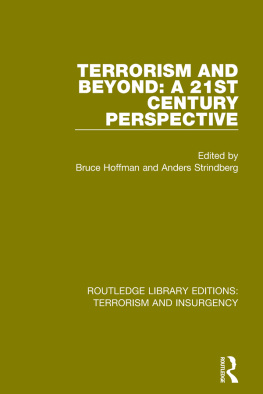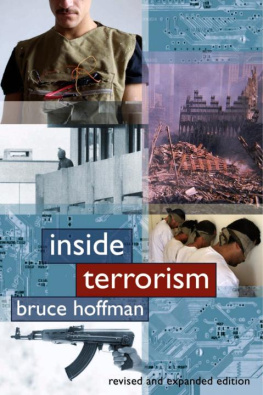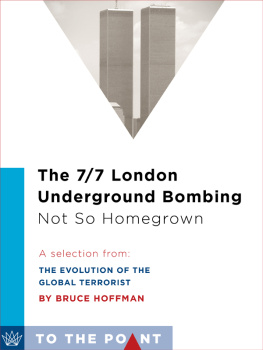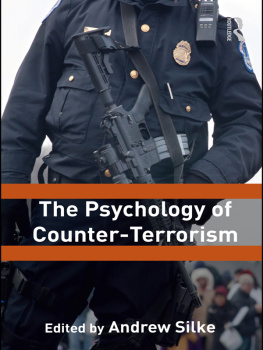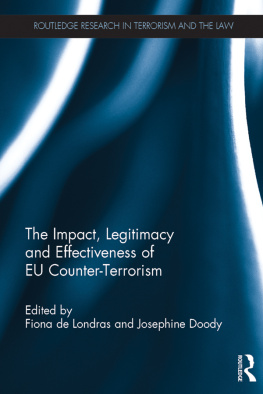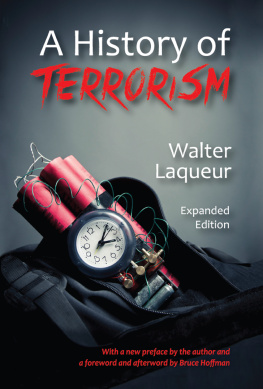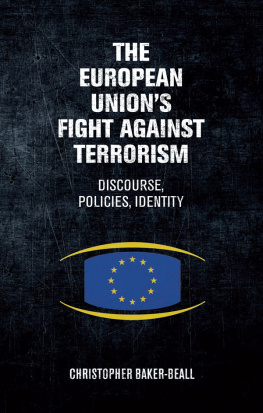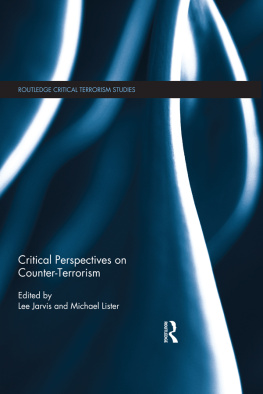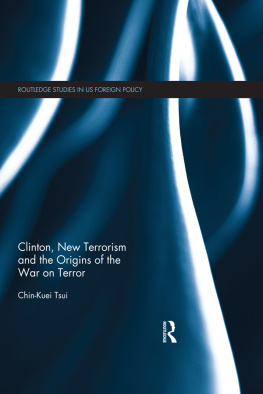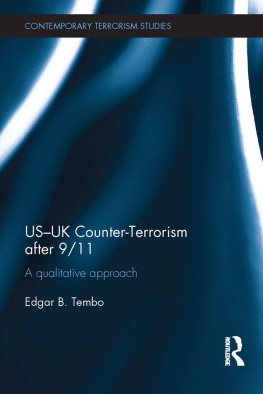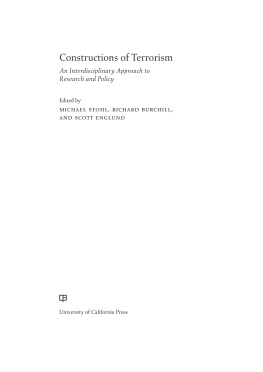First published 2001
This edition first published in 2015
by Routledge
2 Park Square, Milton Park, Abingdon, Oxon OX14 4RN
and by Routledge
711 Third Avenue, New York, NY 10017
Routledge is an imprint of the Taylor & Francis Group, an informa business
2001 Taylor & Francis
All rights reserved. No part of this book may be reprinted or reproduced or utilised in any form or by any electronic, mechanical, or other means, now known or hereafter invented, including photocopying and recording, or in any information storage or retrieval system, without permission in writing from the publishers.
Trademark notice: Product or corporate names may be trademarks or registered trademarks, and are used only for identification and explanation without intent to infringe.
British Library Cataloguing in Publication Data
A catalogue record for this book is available from the British Library
ISBN: 978-1-138-83955-7 (Set)
eISBN: 978-1-315-69683-6 (Set)
ISBN: 978-1-138-90302-9 (Volume 6)
eISBN: 978-1-315-69715-4 (Volume 6)
Publishers Note
The publisher has gone to great lengths to ensure the quality of this reprint but points out that some imperfections in the original copies may be apparent.
Disclaimer
The publisher has made every effort to trace copyright holders and would welcome correspondence from those they have been unable to trace.
Foreword
Events in recent years have repeatedly demonstrated that terrorism is and will remain an international and domestic security concern for the United States into the twenty-first century. The attacks on the U.S. embassies in Kenya and Tanzania in 1998 and of the U.S.S. Cole in Yemen in November 2000, alongside the bombings in 1993 of New York Citys World Trade Center and of an Oklahoma City federal government office building in 1995 underscore the global dimensions of the threat, the potential vulnerability of the U.S. heartland, and the challenges faced by democracies in countering it.
As part of the commemoration events to mark the fifth anniversary of the tragic bombing of the Alfred P. Murrah Federal Building in Oklahoma, the Oklahoma City National Memorial Institute for the Prevention of Terrorism (MIPT), together with The RAND Corporation, sponsored an international conference entitled, Terrorism and Beyond: The 21st Century in Oklahoma City 1719 April 2000. The conference sought to update and carry forward the accomplishments of a landmark 1980 conference sponsored by The RAND Corporation that itself was entitled, Terrorism and Beyond. This earlier effort traced the contours of the terrorism phenomenon as it was then emerging and defined the challenges and issues facing government officials and scholars alike in addressing this threat. The MIPT-RAND conferences purpose was similarly to assess developments in terrorism over the past two decades, map its likely future direction, and propose policy recommendations and other remedial steps to counter this menace. It was organized by Dr. Stephen Sloan of the University of Oklahoma (a participant at the 1981 RAND conference), Dr. Bruce Hoffman from RAND, and Ms. Lisa Moreno-Hix, MIPTs Director of Programs.
Approximately 200 individuals from around the worldrepresenting government agencies, the military, the first-responder community, academe, and private citizens from Oklahoma directly affected or touched by the 1995 tragedyattended the two and half day event. A total of 16 papers were presented in separate breakout sessions in addition to the six plenary meetings held during the conference. In order to help put the changing nature of terrorism and the attendant research and policy needs that these changes present in better historical perspective, representatives of the 1980 RAND conference were invited to join a new generation of scholars and policymakers in discussing the demands of a threat environment complicated by the rise of the internet, the growing dangers of mass destruction or mass casualty terrorism, and the continued instability that has defined the post-cold War epoch. Individual papers addressed such general themes as:
Continuity and changes in terrorist motivations, strategies and capabilities.
Emerging threats and predictions for the future course of terrorism.
Evaluations of the effectiveness of both international and American counterterrorism policies and capabilities.
Policy and research concerns in coping with terrorism, including the use of databases, chronologies and new and different methodologies.
The discussion and exchanges, involving scholars, officials, counterterrorism practitioners, and ordinary persons were always compelling, often controversial, and universally infused with a sense of mission and purpose that terrorisms victims should not have perished or suffered in vain.
One of the results of the conference is the collection of papers published in this special edition of Studies in Conflict & Terrorism. The papers are a representative sampling of the diverse issues that the conference addressed, ranging from the activities of cults and other religious and hate movements to the nexus of international organized crime and terrorism and from the rise of mass casualty terrorism in the 1990s to understanding counterterrorism policy and the political process. It includes work from such noted, long-established scholars as Professor Martha Crenshaw and Mr. Brian Jenkins (the organizer of the 1980 RAND conference), leading government officials charged with countering this menace, such as Mr. David Veness, the assistant commissioner for Specialist Operations at Britains Scotland Yard; as well as that of a new generation of young scholarsincluding Dr. Ami Pedahzur of Haifa University and Dr. Jean-Franois Mayer of the University of Fribourg, Switzerland.
This volume was jointly edited by Bruce Hoffman, the editor-in-chief of Studies in Conflict & Terrorism, and Mr. Anders Strindberg of the University of St. Andrews in Scotland. Additional materials from the conference are available at the MIPTs web site, which can be accessed at .
I encourage you to study this document and keep it for reference. It represents the thinking of the worlds foremost scholars on terrorism, gathered together for the first time in 20 years. You may not agree with their analysis or conclusions, but you should not ignore them. MIPT thanks Dr. Stephen Sloan and The RAND Corporation, in particular Dr. Bruce Hoffman, for their tremendous contributions in making this conference possible. These proceedings are dedicated to those affected by terrorism worldwide.
General (RET) Dennis Reimer
Director
Oklahoma City National Memorial Institute for the Prevention of Terrorism
Terrorism and Beyond:
a 21st Century Perspective
BRIAN MICHAEL JENKINS
Beverly Hills, CA, USA
The conference organizers have asked me to offer you the perspective of someone who has thought about the topic of terrorism for a long time. I am very much aware that time itself is no guarantee of wisdom, but sometimes the ability to reflect on decades can be an advantage. I should say, first of all, that the reflection is humbling. I am convinced that I knew a lot more about terrorism many years agoand knew it with greater certaintythan I do today. Indeed, I recall the very first time, about 25 years ago, that I was invited to testify before Congress. Of course, it was exciting. I was nervous. 1 carefully composed my written testimony, rehearsed my oral testimony; my secretary grilled me with questions. Had they asked me how many machine guns were in the hands of any terrorist group, I would have been able to answer them without hesitation. Unfortunately for me, the very first question was, Mr. Jenkins, what can we do to end terrorism?

